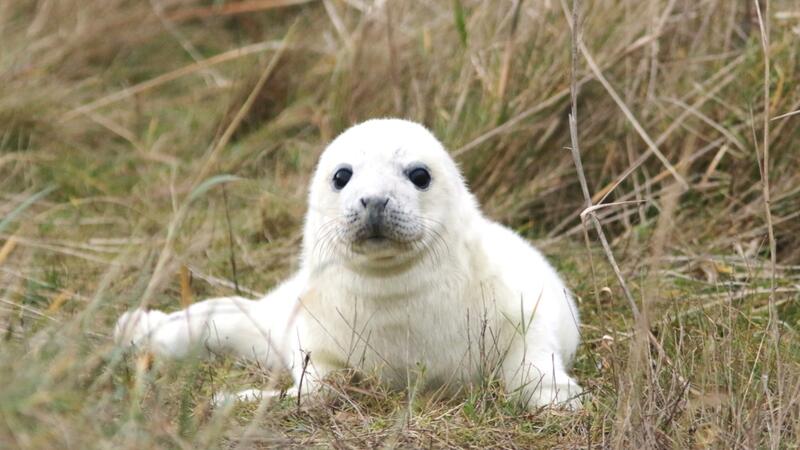Wadden Sea grey seal report: Fewer disturbances for grey seals?

The 2020 spring count of moulting grey seals in the Wadden Sea shows an increase of numbers in comparison to the previous year. In total, 7,649 seals were counted – 17% more than in spring 2019, while the numbers had grown with an average of 9% in previous years. This was determined by the trilateral Expert Group Seals (EG-Seals) of the Trilateral Wadden Sea Cooperation (TWSC) in their report “Grey seal surveys in the Wadden Sea and Helgoland in 2019-2020”. The experts estimate that this spring the seals could have benefited from a reduction of disturbances, especially at beaches, due to the COVID-19 restrictions, resulting in more seals resting on land. Since the start of trilateral counts in 2008, the number of counted grey seals has more than tripled, while unevenly distributed with the largest numbers in the Netherlands, followed by Lower Saxony/Hamburg and Helgoland, and relatively lower numbers in Schleswig-Holstein and Denmark.
“At the moment, we cannot say for certain that reduced human activities of the past months, for example the lack of tourists at the beaches, are responsible for the survey results,” says Sascha Klöpper, Deputy Executive Secretary of the Common Wadden Sea Secretariat (CWSS). “To determine whether the pandemic-related restrictions could have had such an effect, the expert group needs to do more in-depth research. The assumption will be considered among other explanations.” The flights to count grey seals in the Wadden Sea are trilaterally coordinated by the EG-Seals and conducted in winter (pupping season) and again in spring (moulting season).
Newborns are monitored when they are born in the winter months. In the 2019-2020 season, before COVID-19 restrictions were imposed on the Wadden Sea countries, 1,726 pups were counted in the Wadden Sea and on Helgoland (counted separately) with only a slight increase of 2 %, after an increase of 22% in the previous year. The majority of pups, 932 individuals, were born in the Dutch Wadden Sea – a drop by 12%. On the Schleswig-Holstein island of Helgoland and in Lower Saxony/Hamburg numbers grew significantly by 29% and 26% respectively (499 and 295 counted pups). In Danish and Schleswig-Holstein parts of the Wadden Sea no pups were recorded on the selected surveying dates, although one pup was observed later that winter season in Denmark.
The total of grey seals is counted during the moulting season, when they spend substantial time on land. This year’s counts were conducted in March-April 2020. The counts were dominated by the restrictions of the pandemic, with potentially fewer disturbances for the grey seal and flights subjected to the new regulations. Most flights were completed. In Lower Saxony some locations could not be surveyed as a result, with the experts estimating that 10-15% of the animals of this region were thus not counted. Yet, with 587 individuals surveyed in Lower Saxony and Hamburg, the number still shows an increase to the 2019 survey (+30%). Increases were also registered in the Netherlands, with 5,687 (+19%), on Helgoland with 890 (+18%) and in the Schleswig-Holstein Wadden Sea with 218 counted grey seals (+41%). Only in the Danish Wadden Sea with 267 over 100 fewer animals (-35%) were counted compared to the previous year. Grey seals are known to travel between the Wadden Sea and UK waters. These temporary movements may affect the variation in counted numbers.
Grey seals are the largest predators along the Wadden Sea coast and, like harbour seals, one of the iconic species of the region. Centuries ago, grey seals were likely numerous in the Wadden Sea until they disappeared, probably after excessive hunting. They recolonised the Wadden Sea in the second half of the 20th century, originating from UK waters. Part of the Trilateral Wadden Sea Cooperation, the trilateral Expert Group Seals (EG-Seals; former TSEG) coordinates the counts and harmonizes the data from across the Wadden Sea region. The most numerous seal species in the Wadden Sea, the harbour seal, is under special protection under the Agreement on the Conservation of Seals in the Wadden Sea (WSSA), concluded under the auspices of the UN Convention on the Conservation of Migratory Species of Wild Animals (CMS). Although the WSSA does not officially cover the grey seal, the species benefits from the agreement’s protection measures. CWSS acts as the secretariat of WSSA.
The full report can be downloaded here.
A list of past report is available here.
